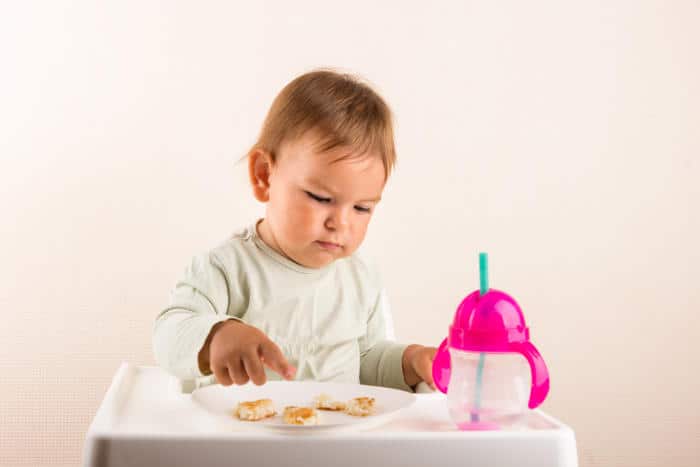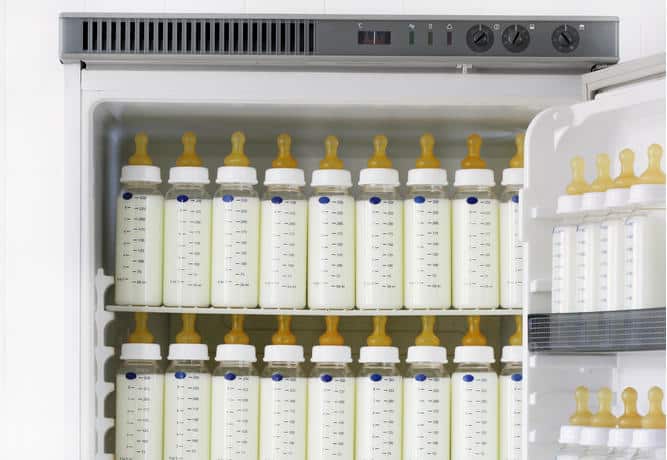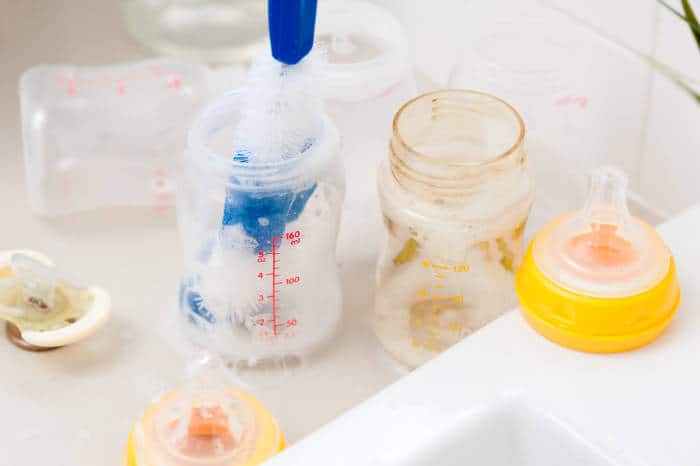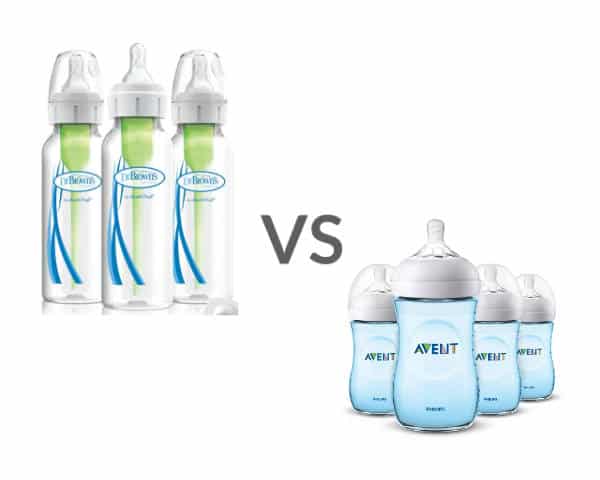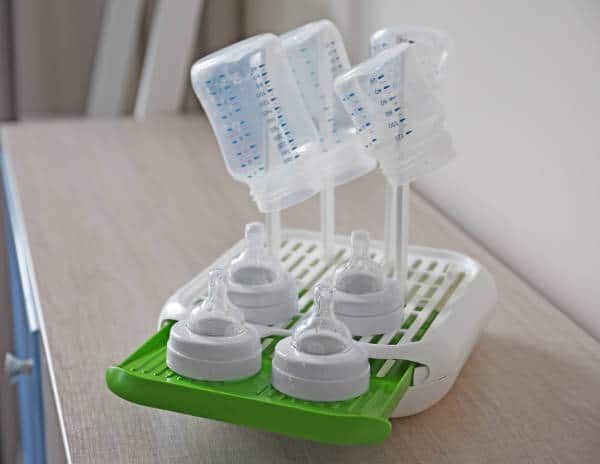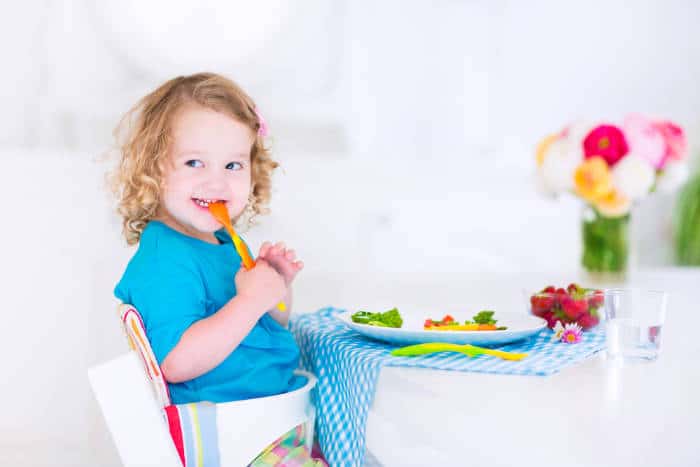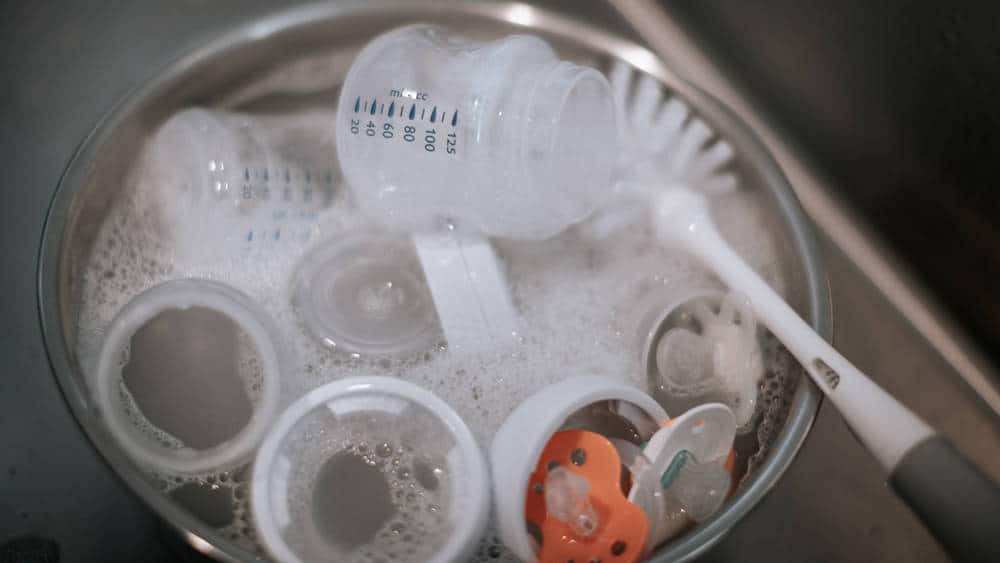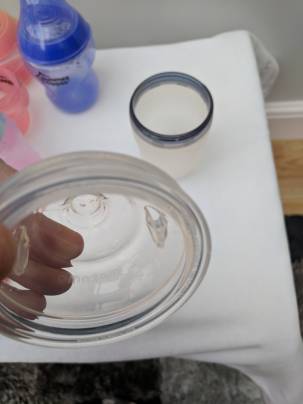
Do you know exactly what infant colic is and what causes it?
Colicky babies will cry uncontrollably and they’re very hard to soothe.
This might surprise some people but colic isn’t a disease. You don’t catch it. But it is possible that something you’re doing (or not doing) is causing it.
There are many forms of colic some more common in adults…. renal, biliary, horse, Devon and painter’s colic. The one you’re here to find out about is baby colic.
One cause of baby colic is thought to be trapped wind or gas ingested when feeding that causes discomfort in the digestive system. There are other possible causes, but this is the one that baby bottles aim to prevent.
You’ll struggle to find a baby bottle out there that doesn’t have some anti-colic features these days. But some go to greater lengths to prevent it than others. It’s those we’ve hunted down for you. Here’s a quick look at some of the best…
Best Bottles for Colic – Our Choices
- Avent Anti-Colic with Air Free Vent – The latest Avent baby bottle with a nipple that stays full even when held horizontally
- Tommee Tippee Advanced Anti-Colic – Award-winning nipple design and a heat sensing central vent straw
- Dr Brown – The original central anti-colic vent that doesn’t allow air through the milk
- Playtex Ventaire – Upright feeding helps with colic and a vent in the base just helps more
Note: Our individual reviews are below, but you can also click any of the links above to check current prices on Amazon and other retailers
Other guides you might like:
- Just how many baby bottles are you going to need anyway?
- If your baby is suffering colic symptoms you might want to look into gripe water or a similar remedy, but does Colic Calm actually work?
- Do you know how to teach your baby to hold their own bottle?
- Interested in knowing whether it’s a good idea to put cereal in a baby bottle? Will it make them sleep better?
- Want to know our pick for the best baby bottles overall?
- Or maybe you’d be interested in the top baby bottle sterilizers.
Table of Contents
Baby Colic
What exactly is colic and what causes it?
Does your child cry in the evenings? Have they been crying for more than three hours at a time? More than 3 days a week? Has this been going on for more than three weeks?
If your child is otherwise healthy, then a pediatrician may diagnose them as having baby colic.
Colic can also be known as or spelled Cholic.
The exact cause of colic is not known and will invariably be different from baby to baby but here’s a list of what current thinking identifies as the main culprits.
- Trapped wind, gas or indigestion
- Poor feeding technique (causes No.1)
- Being hungry
- Being overfed
- Overstimulation
- Intolerance to cow’s milk proteins in formula
- Intolerance to lactose in breast milk
- Inflamed stomach or intestines
- An immature stomach or intestines (not fully developed yet)
How long does colic last?
You’ll be happy to know that usually, colic is something that infants grow out of before they reach 6 months of age. It’s tough, it’s depressing, tiring but it will get better.
How to get rid of baby colic
If you’re sure your child has colic there are a list of things you can do to rule out common causes.
Trapped wind or gas is a common cause. A poor feeding technique can cause this. so can using a glass bottle that has no anti-colic measures to prevent your child sucking in air.
Feeding Tips to Reduce Colic
- Prepare for feeds, don’t let a baby get too hungry. If they are overly hungry they’ll try to drink quickly and run the risk of sucking down extra air.
- Stir or swirl your breastmilk or formula. Don’t shake it. Shaken baby bottles will have more air bubbles in the liquid.
- Make sure the teat or nipple of the baby bottle is always full of milk. If a baby bottle is held at a shallow angle the tip won’t be full. This will result in the air being sucked out of the nipple alongside milk. Drinking air with milk will add to trapped wind and cause baby indigestion.
- Feeding with your baby in an inclined position can help them to deal with trapped air more easily. However, make sure that this position doesn’t stop you from filling the nipple of the baby bottle with milk and not air!
- Break up feeds with 2 or 3 burp breaks
- Ensure you have the correct bottle flow rate. Too slow and they’ll suck to hard and risk drawing air too. Too fast and they’ll likely be choking or gagging often. If you already have a bottle, you can purchase a slow flow nipple separately.
- Watch what you eat and drink when breastfeeding. Caffeinated drinks, alcohol and spicy food can aggravate colic. Make a note of what you eat 1-2 hours before feeding and any effects you think it had.
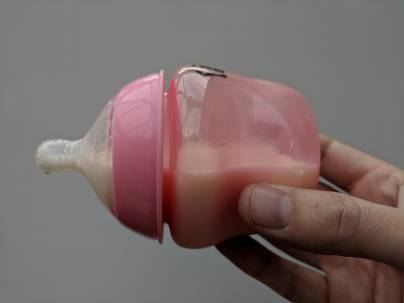
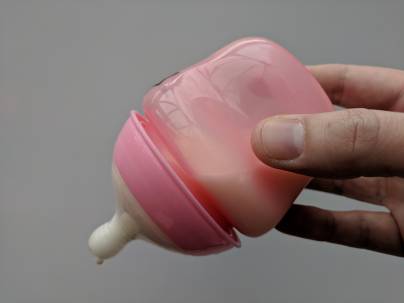
How can baby bottles help?
Baby bottles can help reduce the symptoms of colic by including something called an anti-colic vent.
If a baby sucks milk out of a baby bottle without an anti-colic vent they will create a vacuum (or negative pressure) inside the bottle. Air needs to get back inside to replace the milk and equalize the pressure. If the baby glass bottles do not have a vent several things can happen. The nipple will either collapse or the air will find a way to bubble back through the feeding holes at the end of it. That bubbling air is then easily sucked down by the baby when they next feed.
Good feeding technique keeps the baby bottle at an angle and the nipple full of milk at all times.
Some baby bottle designs will try to do this even when the bottle is held horizontally through the use of an internal anti-colic valve.
Other anti-colic baby bottles have angled designs that promote upright feeding positions that naturally keep the nipple full of milk.
Simethicone or Gripe Water
There are certain natural probiotics and herbal remedies that can reduce gas and the symptoms of trapped wind in children. These are usually sold under the name of ‘gripe water‘.
If you don’t mind giving your child medicines and are more trusting of medical science then Simethicone drops are available without prescription over the counter. These are designed to quickly relieve the symptoms of trapped wind and gas in infants.
What else can you try?
If it isn’t your feeding technique and you have a good bottle with the correct flow rate for your child then it might be down to intolerances.
You can try changing your brand of formula. If you are breastfeeding you might try a lactose-free formula on your little one. Breastfeeding has proven benefits, but switching to a formula for a trial is one way of ruling lactose intolerance out of the equation.
If you aren’t breastfeeding and you can, you might want to try it! When you’ve tried everything, it’s time to see the pediatrician. If your child has an inflamed stomach or intestines there isn’t much you can do yourself. That’s something you need them to diagnose and help you with.
If you’d like to know more, we found this 2015 research paper very informative on the subject!
How to soothe a colicky baby
Here are a few things you can try that you might not have tried already. Each child is different and will respond differently to different things!
Swaddling – An oldie but a goodie. Wrapping your child in a blanket that restricts their arm and leg movements might seem anything but comfort to you. But don’t forget they spent 9 months being cooped up in a tight space. Swaddling helps remind them of the womb and makes them feel safe.
White Noise – Hoovering, dishwashers, the hustle and bustle of a cafe or coffee shop. These things distract our minds, occupy one of our senses. This also works on little ones.
Skin on Skin – A great way to make a child feel secure is to strip them down to their nappy and remove your top. Hold them to your chest. The warmth of your body is comforting and they’ll hear the beat of your heart. Something they’ve been listening to in the womb as soon as they developed hearing.
The Car Seat Rock – More often than not our little one will stop crying the instant you pick up the car seat with her inside and move. Before you’ve even left the house she’s quiet. This is probably down to an instinct developed in the womb to keep quiet when mama is moving and move when she isn’t. It’s one reason why babies in the womb come alive when you’re lying down still. They feel it’s safe to explore. Reverse that thinking and move them around to quieten them down.
Lie Down in a Darkened Room – No, not you, them. Overstimulation is something children can’t deal with. They don’t know how to say no and go chill. Try moving to a darkened or lowly it room where there aren’t any distractions or noises.
Pacifiers – Love them or hate them. Trendy or not. If they soothe your little one and help with their symptoms then it’s worth trying a pacifier.
Anti-Colic Baby Bottle Reviews
Avent Anti-Colic with Air Free Vent
Get all the benefits of one of the best selling bottles of all time with a newly improved vent from Philips that improves your feeding technique.
The new ‘air free vent’ system in the latest range of Avent bottles helps keep the nipple of the bottle full of milk even when it’s held horizontally. Depending on where and when you’re feeding, keeping the bottle at 45 degrees can be challenging. If it slips down horizontally you run the risk of introducing air into the nipple and your little one sucking it down.
A nipple that’s always full means you can also more easily feed your baby in an upright position. Having them upright helps them deal with ingested air more easily. It has a route to escape.
The air-free vent is also optional. If you don’t like it, you can remove it and these bottles become classic Philips anti-colic bottles.
The anti-colic vents on these bottles work a little differently to ensure air won’t reach your baby’s tummy. As a matter of fact, they are the only bottles that incorporate into the collar and you can’t see them. You just know they are working when you hear air seeping through as the bottle is emptied. Plus, this set of plastic bottles includes number one slow flow nipples size.
Philips have a wide range of feeding products and buying into their bottle range means you’ll easily find a compatible sterilizer or warmer. Plus, if you prefer glass baby bottles over silicone bottles, Philips offer it as well.
We’ve more in-depth information on Avent vs Dr Browns in this comparison piece.
What we liked:
- Anti-colic vent
- Optional air-free vent that helps keep the nipple full when held horizontally
- BPA free
- Good compatibility, work with the rest of the Avent range, usable up to ‘sippy cup’ age
- Clear measurement markings
- Dishwasher and microwave safe
What we didn’t:
- Utilitarian design
Tommee Tippee Advanced Anti-Colic
The latest innovation from Tommee Tippee claims to reduce gas in babies by up to 80%.
It’s a 3 piece anti-colic technology builds upon the simple vents in previous Tommee Tippee bottles by drawing the incoming air away from the milk and down through the straw you can see in the middle of the bottle. The straw is also conveniently heat sensing and will change color (go pink) if milk is too hot.
You get the benefits of the tippee nipple which hasn’t changed from other iterations of their bottles. It’s award-winning and has a very wide base making it feel natural to your baby and closer to a real breast. They don’t suffer at all from any nipple collapse problems.
Tommee Tippee also has an extensive range of other products like sterilizers, warmers, and handles that are all compatible with these bottles.
What we liked:
- BPA free
- Easy to hold
- Many different colors
- Compatibility with other nipple types and Tommee Tippee products
- Affordable
- Microwave and dishwasher compatible
What we didn’t:
- Many parts to clean
- Straw/vent is not optional
- Caps may discolor after repeated sterilization cycles
Dr Brown
Dr Brown’s bottles are one of the top-selling bottles in the USA. They’ve won many awards because they were the first to introduce what other brands have only recently done.
The Dr Brown method of preventing colic is to use a one-way anti-colic valve in the top of the bottle. This isn’t anything revolutionary. Where they differed originally was the fact that air that enters the bottle through that vent doesn’t bubble back through the milk. It passes through the central straw. This is claimed to help preserve nutrients within the milk by avoiding oxidization.
Although they’re well priced and innovative, where you’ll likely struggle with Dr Brown’s bottles is in the cleaning. There are 6 pieces that makeup each bottle and because they are tall and narrow there’s no getting your hands inside to wash. You really need to purchase a bottle brush if you aren’t going to clean them on the top shelf of your dishwasher.
You’ll find Dr Brown bottles used in some hospitals and doctors offices. Not surprising, because in all honesty, they look like a bottle that would be used in a doctors office.
Read more about Avent vs Dr Browns baby bottles in this comparison piece that compares the companies and their 2 major products.
What we liked:
- Nutrient preservation anti-colic valve
- Tall & slender, easy for you to hold and direct
- BPA, PVC, and Phthalate free
- Dishwasher safe (top shelf)
What we didn’t:
- Utilitarian design
- 6 pieces per bottle, more parts to wash
- Not microwave friendly
Playtex Ventaire
The main thing you immediately notice about this anti-colic bottle is the angled bottle shape. This is a bottle that encourages and makes upright feeding positions easier to achieve. More upright feeding can help relieve colic by giving your baby an immediate and easy way to deal with any ingested air (it will bubble out of them).
According to Playtex pediatricians, upright feeding is also beneficial to preventing ear infection.
There’s an anti-colic venting system in the base of these bottles. In fact, the base of the bottle screws on just like the top and also requires assembly. Put 2 of these in the dishwasher and that’s 12 pieces on the top shelf that mean there’s a lot of space taken up.
The nipples are standard orthodontic bulb nipples which have a wide base to give your baby a natural feel against their face.
What we liked:
- BPA free
- Easy to hold
- Base venting system mean no air bubbles through the milk
What we didn’t:
- Top and base to assemble. Get the base venting system assembly wrong and they may leak on you.
- 6 piece design, lots of dishwasher space gets taken up
- Angled design means reduced compatibility with sterilizers and warmers





